The coastal white sand vegetation of the Gulf coast of the UAE
Article first posted: 06. October 2009
1. Introduction
The aim of this brief contribution is to give an introduction to the coastal white sand vegetation of the Gulf coast of the UAE (Figure 1) and to highlight the most critical issues affecting it. Vesey-Fitzgerald (1957) coined the term "coastal white-sand associations" to describe the vegetation of the predominantly calcareous sands that run parallel to much of the western and southern Arabian Gulf coastline. These sands differ in their composition and structure from inland desert sands, which are of different origin. Coastal sands are derived almost exclusively from marine organisms and carbonate sediments, and consist to a large extent of CaCO3. In contrast, the inland desert sands are composed predominantly of quartz grains, and they may appear distinctly red when the grains are coated with haematite (an iron oxide). They are also largely lacking any significant CaCO3 content.

Figure 1. The UAE Gulf coastline stretches from the Sila'a Peninsula in the west to Musandam (Oman) in the east.
The vegetation of coastal habitats of the region appears to have been somewhat neglected by ecologists to the extent that it is barely mentioned in many overviews. This is possibly because (a) these habitats lie at the interface between true marine and terrestrial ecosystems, and so neither terrestrial nor marine ecologists feel responsible for them, (b) the plant species involved are often regarded as "difficult", and (c) in many cases, coastal vegetation in the region is simply equated to mangroves, and other vegetation types are largely or completely ignored, even though mangroves occupy only a very small total area of the coastline. Zohary (1973) wrote "we are especially ignorant of the vegetation in the Arabian Peninsula" and indicated that only few investigations of the coastal vegetation had been carried out. Despite a number of more recent studies, this assertion still applies to some extent for the coastal vegetation, although in the meantime, we have an overview of the main plant communities. Unfortunately, due to the breathtaking speed of current infrastructure development and associated large-scale habitat destruction, as well as the scarcity of experienced vegetation ecologists and taxonomists in the region, we are likely to remain forever ignorant of many of the more specific details.
2. Vegetation
An important characteristic of the coastal white sands is the virtual lack of any direct influence of salt on the vegetation, despite the sometimes immediate proximity to the coastline (in some cases within as little as 10 metres). This is only possible where the land lies well above the high-tide mark (at least 2 to 3 m). The vegetation is therefore characterised almost exclusively by glycophytes, except for distinct subunits in which certain moderately halophytic species play a role. The vegetation of the coastal white sands of the UAE is characterised physiognomically by a sparse cover of perennial dwarf shrubs and grasses (Figure 2). Vegetation cover of the perennials rarely exceeds 5 %. Of particular importance is Panicum turgidum, and this tussock-forming grass is the dominant constituent of coastal white sands in many areas throughout the region, although less so in the UAE.
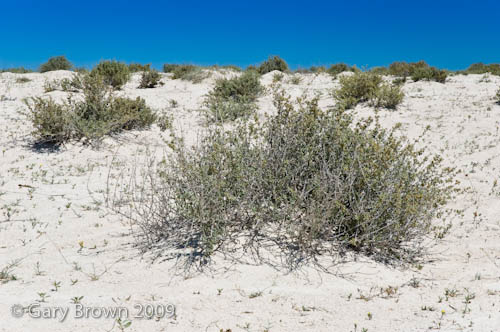
Figure 2. Coastal white sand vegetation with Sphaerocoma aucheri at Taweela, just to the east of Abu Dhabi island. 21.03.2005.
To the east of Abu Dhabi island (but also probably in fragments further to the west), the coastal white sand vegetation contains a number of highly characteristic perennials, apart from Panicum turgidum. Based on studies from Jebel Ali, near Dubai, Deil & Müller-Hohenstein (1996) assigned the stands to the Cornulaco monacanthae-Sphaerocometum aucheri, and these authors also described a number of distinctive subassociations. Brown et al. (2007) have recently given a detailed overview of the coastal white sand vegetation immediately to the east of Abu Dhabi island. Characteristic species of the association are the dwarf shrubs Sphaerocoma aucheri (Figures 2 and 3) and Cornulaca monacantha. Other dwarf shrubs that are regular associates include Helianthemum lippii and Heliotropium kotschyi. The most widespread perennial grass is Coelachyrum piercii (Figure 4),which along the Arabian Gulf coast of the UAE appears to be restricted to the section between Taweela (north-east of Abu Dhabi) and Ra's Al-Khaimah. It is highly characteristic of the coastal white sands, but in the north-east of the UAE, it also occurs on red sands near the coast. The tussock grass Pennisetum divisum is also occasionally present. The sedge Cyperus arenarius (Figure 5) is usually widespread and abundant. The slightly to moderately salt-tolerant Sporobolus iocladus is locally common and widespread in this habitat type, as is Zygophyllum qatarense. In the far north-east of the UAE, especially in Ra's Al-Khaimah, Prosopis cineraria is found on the low dunes very close up to the coastline. This tree is dependent on non-saline or only slightly saline ground water stored in the sand.
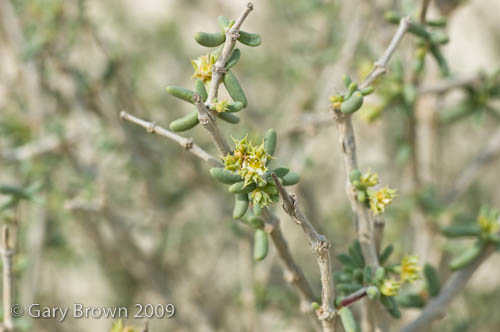
Figure 3. Sphaerocoma aucheri at Taweela, just to the east of Abu Dhabi island. 18.01.2005.

Figure 4. Coelachyrum piercii at Taweela, just to the east of Abu Dhabi island. 21.03.2005.
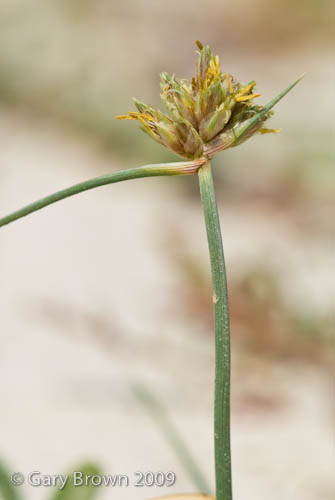
Figure 5. Cyperus arenarius at Taweela, just to the east of Abu Dhabi island. 24.02.2007.
These and other perennials are accompanied by a profusion of annuals, particularly in wet years. Percentage cover of the annuals can reach 20 %, although coverage values between 5 and 10 % are more typical. A distinct floristic gradient exists along the Gulf coast of UAE, with the floristically most diverse areas occurring in the north-east, the least diverse in the west. Biomass production of annuals is also distinctly higher in the north-east. It is possibly no coincidence that a number of species have their western-most distribution limits in the UAE close to Abu Dhabi island. The coastline west of the island runs more-or-less from west to east, but east of the island veers off in a north-easterly direction towards the Hajar Mountains of the Musandam (see Figure 1). This probably correlates with an increase in rainfall with closer proximity to the mountains, as well as a slight decrease in temperature, both factors which are favourable for the growth of desert annuals in the region.
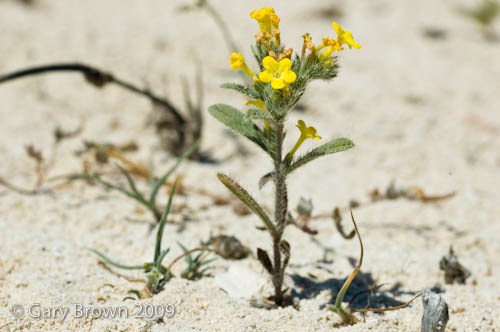
Figure 6. Arnebia hispidissima at Taweela, just to the east of Abu Dhabi island. 21.03.2005.
Between Abu Dhabi and Dubai, the more regular species, i.e. ones that also occur in drier years, include Arnebia hispidissima (Figure 6), Herniaria hemistemon, Hippocrepis areolata (Figure 7), Launaea capitata, Launaea mucronata, Lotus halophilus and Oligomeris linifolia. Some annual species, such as the grasses Cutandia memphitica, Rostraria pumila (Figure 8) and Schismus barbatus, as well as Eremobium aegyptiacum, Ifloga spicata, Paronychia arabica (Figure 9) and Savignya parviflora are noticeably rarer and virtually absent in dry years. Further north-east, the annual flora becomes more diverse, with species such as Astragalus annularis, Ononis serrata, Plantago boissieri, Reichardia tingitana and Silene villosa common or even abundant.
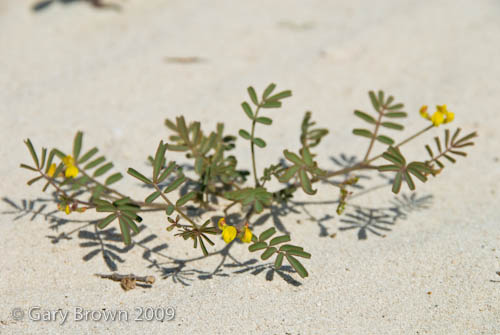
Figure 7. Hippocrepis areolata at Taweela, just to the east of Abu Dhabi island. 24.02.2007.

Figure 8. Rostraria pumila at Taweela, just to the east of Abu Dhabi island. 24.02.2007.
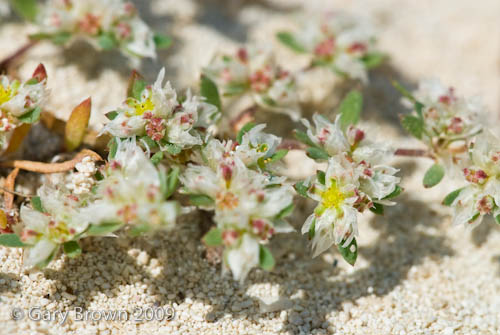
Figure 9. Paronychia arabica at Taweela, just to the east of Abu Dhabi island. 24.02.2007.
3. Fauna
Due to their relatively dense and diverse vegetation, coastal white sands usually support a rich fauna. For instance, they are an important breeding ground for Chestnut-bellied Sandgrouse. Reptiles are particularly well represented in this habitat type (Figure 10), and the sands at Taweela are (or possibly now "were" due to the recent construction of a large industrial complex there) probably home to the western-most occurrence of the rare Wonder Gecko Teratoscincus keyserlingi in Arabia, which has a very restricted occurrence along the coastline of northern Oman and the UAE. Hawksbill Turtles use the coastal dunes and sand sheets areas in the vicinity of the sea for nesting, although due to disturbance, nesting has largely ceased on the mainland, but still occurs on offshore islands.
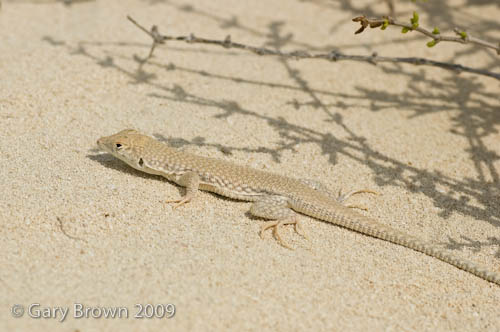
Figure 10. Acanthodactylus cf. schmidti at Taweela, just to the east of Abu Dhabi island. 18.01.2005.
4. Threats to the coastal white sand vegetation
Degradation and destruction of natural coastal ecosystems, mainly for urban (Figure 11), industrial and tourism development, have long been recognised as severe problems in the UAE, and much of the natural coastline between Abu Dhabi island and Musandam will soon have disappeared as a consequence. Off-road driving has become a ubiquitous activity throughout the region, resulting in the direct destruction of the vegetation cover, soil degradation and soil compaction. Coastal habitats have not been immune from the massive overgrazing that is prevalent throughout much of the Gulf region, and which is generally regarded as one of the main causes of "desertification". Key features of this phenomenon relevant to the coastal vegetation are a loss of vegetation cover / productivity, and an associated reduction in biodiversity (both fauna and flora), including the reduced number of palatable species.
The future of this unique, formerly widespread habitat type is looking extremely bleak in the UAE, and serious efforts should be undertaken to conserve the remaining fragments.
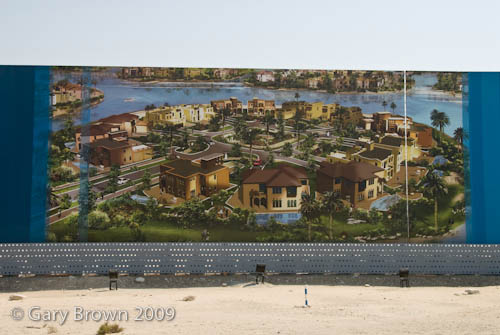
Figure 11. Signboard for yet another new luxury housing development on one of the last remaining large tracts of coastal white sands near Jebel Ali, Dubai. 21.09.2007.
References and further reading
Brown, G. & Böer, B. (2004): Interpretation Manual of Major Terrestrial and Semi-Natural Habitat Types of Abu Dhabi Emirate. - Research Report, Environmental Research and Wildlife Development Agency, Abu Dhabi. September 2004. 62 pp.
Brown, G. & Böer, B. (2005a): Terrestrial habitats. - In: Hellyer, P. & Aspinall, S. (eds.): The Emirates, A Natural History. - Trident, London. pp. 93-107.
Brown, G. & Böer, B. (2005b): Terrestrial plants. - In: Hellyer, P. & Aspinall, S. (eds.): The Emirates, A Natural History. - Trident, London. pp. 141-155.
Brown, G., Aspinall, S. & Sakkir, S. (2007): The vegetation of the coastal white sands at Taweela (Abu Dhabi Emirate). - Tribulus 17: 5-15.
Brown, G., Böer, B. & Sakkir, S. (2008): The coastal vegetation of the western and southern Gulf - characterisation and conservation aspects. - In: Abuzinada, A.H., Barth, H.-J., Krupp, F., Böer, B. & Abdessalaam, T.Z. (eds.): Protecting the Gulf's Marine Ecosystems from Pollution. - Birkhäuser Verlag, Switzerland. pp. 23-44.
Brown, G., Peacock, J., Loughland, R. and Alhadrami, G.A. (2006): Coastal and terrestrial ecosystem management requirements in the Arabian Peninsula. - In: Amer, K.M. (ed.): Policy Perspectives for Ecosystem and Water Management in the Arabian Peninsula. - United Nations University, Ontario, Canada. pp. 90-104.
Deil, U. (1998): Coastal and sabkha vegetation. - In: Ghazanfar, S.A. & Fisher, M. (eds.): Vegetation of the Arabian Peninsula. - Kluwer Academic Publishers, Dordrecht. pp. 209-228.
Deil, U. (2000): Halophytic vegetation along the Arabian coast - azonal or linked to climatic zones? - Phytocoenologia 30: 591-611.
Deil, U. & Müller-Hohenstein, K. (1996): An outline of the vegetation of Dubai (UAE). - Verhandlungen der Gesellschaft für Ökologie 35: 77-95.
Jongbloed, M.V.D. (2003): The Comprehensive Guide to the Wildflowers of the United Arab Emirates. - Environmental Research and Wildlife Development Agency, Abu Dhabi. 576 pp.
Kürschner, H. (1986): A study of the vegetation of the Qurm Nature Reserve; Muscat Area, Oman. - Arab Gulf Journal of Scientific Research. 4: 23-52.
Kürschner, H. (1998): Biogeography and introduction to the vegetation. - In: Ghazanfar S.A. & Fisher M. (eds.): Vegetation of the Arabian Peninsula. - Kluwer Academic Publishers, Dordrecht. pp. 63-98.
Vesey-Fitzgerald, D.F. (1957): The vegetation of central and eastern Arabia. - Journal of Ecology 45: 779-798.
Western, A.R. (1989): The Flora of the United Arab Emirates – An Introduction. - United Arab Emirates University.
Zohary, M. (1973): Geobotanical Foundations of the Middle East. - Gustav Fischer Verlag, Stuttgart.